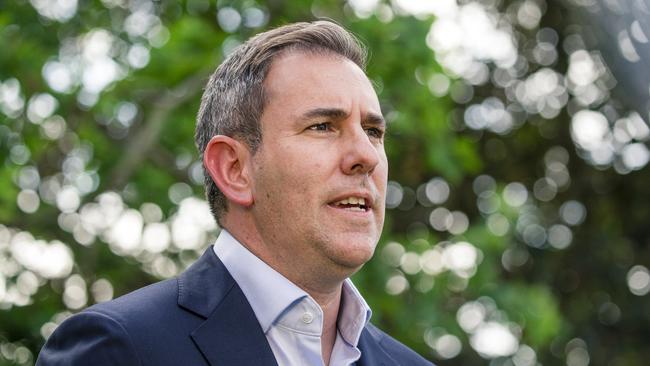Power bill rebates drive inflation to three-year low
A record reduction in household power bills due to government energy rebates drove inflation in August to its lowest level in three years – but the temporary decline is set to be ignored by the Reserve Bank.

A record reduction in electricity prices as millions more households received $75 energy bill rebates drove inflation in August to its lowest level in three years, but the temporary decline is set to be ignored by the Reserve Bank.
Annual headline inflation slipped to 2.7 per cent in August, the Australian Bureau of Statistics reported on Wednesday, down from 3.5 per cent in July and falling within the RBA’s 2-3 per cent target band for the first time since October 2021.
However, the latest figures showed that underlying price pressures remained stubborn, with the RBA’s preferred underlying inflation gauge – trimmed mean inflation, which strips out volatile price movements – at 3.4 per cent in the 12 months to August, easing from 3.8 per cent in July.
Former RBA governor Phil Lowe told The Australian the primary issue for the central bank was that inflation was “quite persistent”.
“As Michele (Bullock) keeps explaining, the supply-side isn’t strong enough to meet the current level of weak demand. It’s not really rocket science.”
Jim Chalmers, who will arrive in Beijing on Thursday to meet with top Chinese economic officials, praised the “very heartening” inflation data, saying they showed Labor’s cost-of-living supports were easing the inflationary pressure on households.
“There is nothing artificial about helping people with their power bills, and we know that the Liberals and Nationals don’t support that” the Treasurer said.
Electricity prices dived 17.9 per cent in the year to August, the largest fall on record. Without the rebates, electricity prices would have risen 0.1 per cent, the ABS said.
On Tuesday, after leaving interest rates steady at 4.35 per cent, Ms Bullock said the central bank would look through Wednesday’s figures but warned that progress on reducing underlying inflation had slowed.
“The point I would make is that if … we get an inflation number with a two in front of it, so it’s back in the band, that doesn’t mean that we’ve got inflation under control,” she said. “It doesn’t mean that inflation is sustainably back within the band.”
The RBA expects headline inflation to return to its target band before year’s end before shooting back up to 3.7 per cent 12 months later, once government support expires.
Amid persistent core price pressures, Ms Bullock also effectively ruled out a pre-Christmas rate cut. Investors and most economists don’t anticipate the RBA to press ahead with rate reductions until February next year.
Driving the decline in the headline inflation rate in August was a sharp fall in electricity prices as households benefited from the first quarterly instalment of Labor’s $300 power bill rebate. West Australians, Tasmanians and Queenslanders had already received the power bill relief in July.
Also pushing the monthly inflation figure lower was a decline in petrol prices, which averaged $1.85 a litre in August – 7.6 per cent lower than 12 months prior – as crude oil prices retreated on weak Chinese demand and easing concerns over a broadening of conflict in the Middle East.
Together, reductions in electricity and fuel prices lopped 0.7 percentage points off the headline inflation reading.
Inflationary pressures, however, continued to simmer across other items in basket of goods and services measured by the ABS.
Insurance prices rose 14 per cent in the 12 months to August, the ABS said, with increased reinsurance, natural disaster and claim costs driving up premiums.
Fruit and vegetable costs jumped 9.6 per cent over the same period, as poor weather and diseases reduced yields for crops, including strawberries, broccoli and grapes.
Amid a dearth in residential construction and an ongoing rental shortage, housing costs also climbed, with rents rising 6.8 per cent and home building rising 5.1 per cent.
Prices in the labour-intensive services sector also continued to rise strongly, with the cost of taking pets to the vet up 6.8 per cent, trips to the hospital up 6.1 per cent, and car repairs up 4.3 per cent.
“These sticky components would need to decelerate before the RBA can consider moving the stance towards hinting at lower official interest rates,” Citi senior economist Faraz Syed said.
With Labor coming under growing pressure over its handling of high inflation, consumer group Choice will on Thursday release its latest quarterly report on supermarket prices.
Discount supermarket chain Aldi had the lowest average basket price at $50.79, followed by Coles at $66.22, and Woolworths $68.37. The latter two retailers are currently the subject of a probe, conducted by the competition watchdog, into their pricing practices.





To join the conversation, please log in. Don't have an account? Register
Join the conversation, you are commenting as Logout